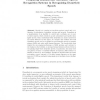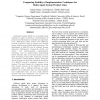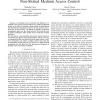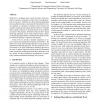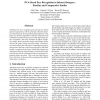3630 search results - page 51 / 726 » How to Compare Treebanks |
109
click to vote
AI
2011
Springer
14 years 1 months ago
2011
Springer
Abstract. Speech is a complex process that requires control and coordination of articulation, breathing, voicing, and prosody. Dysarthria is a manifestation of an inability to cont...
CSMR
2009
IEEE
15 years 4 months ago
2009
IEEE
Multi-agent systems (MAS) are increasingly being exploited to support autonomous recommendation of products and information to contemporary application users. Multi-agent system p...
116
click to vote
INFOCOM
2006
IEEE
15 years 3 months ago
2006
IEEE
— In multi-hop ad hoc networks, the efficiency of a medium access control protocol under heavy traffic load depends mainly on its ability to schedule a large number of simultan...
ISPASS
2006
IEEE
15 years 3 months ago
2006
IEEE
SimPoint is a technique used to pick what parts of the program’s execution to simulate in order to have a complete picture of execution. SimPoint uses data clustering algorithms...
AMFG
2003
IEEE
15 years 3 months ago
2003
IEEE
Techniques for face recognition generally fall into global and local approaches, with the principal component analysis (PCA) being the most prominent global approach. This paper u...
